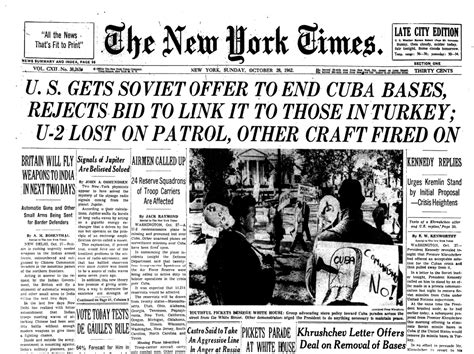
Mark Cuban believes two immediate changes could significantly improve the United States: simplifying healthcare and modernizing governmental IT infrastructure. He argues that streamlining healthcare could drastically reduce costs and improve access, while updating technology would enhance efficiency and cybersecurity.
Billionaire entrepreneur Mark Cuban has outlined a two-pronged approach to rapidly overhaul America, focusing on healthcare and governmental IT infrastructure. In a recent interview, Cuban emphasized that tackling these two sectors would yield substantial benefits in terms of cost savings, efficiency, and citizen well-being. His plan hinges on leveraging technology and streamlining processes to address systemic issues he sees as major impediments to national progress.
“If I was emperor for a day, I would streamline healthcare and update all government IT systems,” Cuban stated, highlighting his conviction that these changes could have an immediate and profound impact.
Streamlining Healthcare: A Digital Prescription
Cuban’s vision for healthcare reform centers on simplification and transparency. He believes that the current system is overly complex, leading to inflated costs and accessibility issues. One of his primary goals is to leverage technology to create a more efficient and user-friendly healthcare experience.
He advocates for a shift toward digital health records, telemedicine, and AI-powered diagnostics. These technologies, he argues, can reduce administrative overhead, improve accuracy, and empower patients to take greater control of their health. “The amount of money that’s wasted in healthcare is just mind-boggling,” Cuban noted, adding that “a more streamlined, tech-driven approach could save billions of dollars annually.”
Cuban’s specific proposals include:
- National Healthcare Database: Establishing a centralized, secure database containing patient medical records. This would enable seamless information sharing among healthcare providers, reducing redundancy and improving care coordination. He suggests emulating successful models from other countries, such as those in Scandinavia, where national health databases have demonstrably improved patient outcomes and reduced administrative costs. This database would adhere to strict privacy regulations, ensuring patient confidentiality while facilitating efficient data exchange.
- Telemedicine Expansion: Expanding access to telemedicine services, particularly in rural and underserved areas. Telemedicine can provide convenient and affordable access to primary care, specialist consultations, and mental health services. Cuban envisions a network of virtual clinics staffed by qualified healthcare professionals, offering remote consultations and monitoring services. He suggests incentivizing healthcare providers to adopt telemedicine by offering reimbursement parity with in-person visits. This would encourage widespread adoption and ensure that patients have access to quality care regardless of their location.
- Price Transparency: Requiring healthcare providers and insurers to disclose pricing information upfront. This would empower consumers to make informed decisions about their care and shop around for the best value. Cuban proposes a standardized pricing system that allows patients to easily compare costs for various procedures and treatments. He believes that price transparency would introduce market forces into the healthcare system, driving down costs and improving efficiency. This system would need to be carefully implemented to avoid unintended consequences, such as price fixing or reduced quality of care.
- AI-Powered Diagnostics: Implementing AI-powered diagnostic tools to improve accuracy and efficiency. AI algorithms can analyze medical images, lab results, and patient data to identify potential health problems early on. Cuban believes that AI can assist healthcare providers in making more accurate diagnoses and developing personalized treatment plans. He suggests investing in research and development of AI-powered diagnostic tools and integrating them into clinical practice. This would require training healthcare professionals to use these tools effectively and ensuring that they are used ethically and responsibly.
- Negotiating Drug Prices: Allowing the federal government to negotiate drug prices directly with pharmaceutical companies. This would reduce the cost of prescription drugs, making them more affordable for consumers. Cuban argues that the current system, which prohibits government negotiation, allows pharmaceutical companies to charge excessively high prices. He believes that negotiation would level the playing field and ensure that patients have access to the medications they need at a reasonable cost. This proposal is likely to face strong opposition from the pharmaceutical industry, which argues that it would stifle innovation and reduce investment in drug development.
- Preventative Care Focus: Redirecting resources towards preventative care and wellness programs. Cuban emphasizes the importance of investing in programs that promote healthy lifestyles and prevent chronic diseases. He suggests offering incentives for individuals to participate in wellness programs and providing access to resources such as nutrition counseling and exercise programs. He believes that preventative care is a more cost-effective approach than treating diseases after they have developed. This would require a shift in mindset from a reactive to a proactive approach to healthcare.
Modernizing Government IT: A Digital Revolution
The second pillar of Cuban’s plan involves modernizing the government’s outdated IT infrastructure. He argues that the current systems are inefficient, insecure, and costly to maintain. Updating these systems would not only save taxpayer money but also improve the delivery of government services and enhance cybersecurity.
“The government’s IT systems are archaic,” Cuban asserted. “They’re vulnerable to cyberattacks, and they’re not user-friendly. We need to bring them into the 21st century.”
Cuban’s proposals for modernizing government IT include:
- Cloud Migration: Migrating government data and applications to the cloud. Cloud computing offers numerous benefits, including scalability, cost savings, and improved security. Cuban suggests partnering with leading cloud providers to create a secure and reliable cloud infrastructure for government agencies. This would allow agencies to access the computing resources they need on demand, without having to invest in expensive hardware and software.
- Cybersecurity Enhancements: Investing in cybersecurity enhancements to protect government data and systems from cyberattacks. Cuban emphasizes the importance of implementing robust security measures, such as multi-factor authentication, encryption, and intrusion detection systems. He suggests creating a dedicated cybersecurity task force to oversee the implementation of these measures and to respond to cyber threats.
- Open-Source Software: Embracing open-source software to reduce costs and improve transparency. Open-source software is free to use and modify, which can save the government money on licensing fees. It is also more transparent than proprietary software, making it easier to identify and fix security vulnerabilities. Cuban suggests encouraging government agencies to adopt open-source software and to contribute to the open-source community.
- Digital Service Teams: Establishing digital service teams to improve the user experience of government websites and applications. These teams would be composed of designers, developers, and user experience experts. Their mission would be to make government services more user-friendly and accessible. Cuban suggests modeling these teams after successful digital service teams in other countries, such as the UK’s Government Digital Service.
- AI Integration: Integrating AI into government operations to improve efficiency and decision-making. AI can be used to automate tasks, analyze data, and provide insights to decision-makers. Cuban suggests using AI to improve fraud detection, streamline procurement processes, and personalize government services. This would require training government employees to use AI tools effectively and ensuring that AI is used ethically and responsibly.
- Data Analytics Platforms: Implementing data analytics platforms to improve decision-making and resource allocation. Data analytics platforms can help government agencies to identify trends, patterns, and anomalies in their data. This information can be used to improve decision-making and allocate resources more effectively. Cuban suggests creating a centralized data analytics platform that can be used by all government agencies. This platform would need to be secure and compliant with privacy regulations.
Challenges and Considerations
While Cuban’s proposals are ambitious and potentially transformative, they also face significant challenges. Implementing these changes would require overcoming bureaucratic inertia, navigating complex regulatory hurdles, and securing buy-in from various stakeholders.
One of the biggest challenges is the sheer scale of the task. The US healthcare system is vast and complex, with a multitude of payers, providers, and regulations. Modernizing government IT infrastructure would also be a massive undertaking, requiring significant investment and coordination across numerous agencies.
Another challenge is the potential for political opposition. Cuban’s proposals are likely to face resistance from vested interests, such as the pharmaceutical industry and the healthcare lobby. Overcoming this opposition would require strong political will and a compelling public narrative.
Furthermore, there are legitimate concerns about data privacy and security. A national healthcare database would contain sensitive patient information, which would need to be protected from unauthorized access. Similarly, migrating government data to the cloud would raise concerns about data security and sovereignty.
Despite these challenges, Cuban remains optimistic that his proposals can be implemented. He believes that the potential benefits are too great to ignore. “We have the technology and the resources to make these changes,” Cuban stated. “All we need is the political will to do it.”
Broader Economic and Societal Impacts
The successful implementation of Cuban’s two-step plan could have far-reaching economic and societal impacts. Streamlining healthcare could lower costs for businesses and individuals, freeing up resources for other investments. It could also improve the health and productivity of the workforce, boosting economic growth.
Modernizing government IT could improve the efficiency of government services, making it easier for citizens to interact with their government. It could also enhance cybersecurity, protecting government data and systems from cyberattacks. This would foster greater trust in government and improve national security.
Moreover, these changes could create new opportunities for innovation and entrepreneurship. A more efficient healthcare system could spur the development of new medical technologies and treatments. A modernized government IT infrastructure could enable the creation of new digital services and applications.
Conclusion
Mark Cuban’s two-step plan to overhaul America is a bold and ambitious vision. While it faces significant challenges, it also holds the potential to transform the country for the better. By streamlining healthcare and modernizing government IT, Cuban believes that the US can become more efficient, competitive, and prosperous. Whether his vision will become a reality remains to be seen, but it has undoubtedly sparked a much-needed conversation about the future of healthcare and technology in America.
Frequently Asked Questions (FAQ)
-
What are the two main areas Mark Cuban focuses on in his plan to overhaul America?
Mark Cuban’s plan centers on two key areas: streamlining healthcare to reduce costs and improve access, and modernizing governmental IT infrastructure to enhance efficiency and security.
-
How does Cuban propose to streamline healthcare in the U.S.?
Cuban suggests a multi-faceted approach including establishing a national healthcare database, expanding telemedicine access, implementing price transparency measures, using AI-powered diagnostics, allowing government negotiation of drug prices, and focusing on preventative care.
-
What are some of Cuban’s ideas for modernizing government IT infrastructure?
Cuban proposes migrating government data to the cloud, enhancing cybersecurity measures, adopting open-source software, creating digital service teams to improve user experience, and integrating AI into government operations.
-
What challenges might hinder the implementation of Cuban’s proposals?
Potential challenges include bureaucratic resistance, complex regulatory hurdles, political opposition from vested interests, and concerns about data privacy and security. Successfully implementing these changes would require strong political will and overcoming entrenched systems.
-
What are the potential economic and societal benefits of implementing Cuban’s plan?
The potential benefits include lower healthcare costs for businesses and individuals, improved health and productivity of the workforce, more efficient government services, enhanced cybersecurity, and new opportunities for innovation and entrepreneurship.
-
What are the potential cost savings associated with streamlining healthcare, according to Cuban?
Cuban believes that streamlining healthcare through technology and efficient processes could save billions of dollars annually by reducing administrative overhead and improving care coordination.
-
How would a national healthcare database improve healthcare delivery, according to the plan?
A national healthcare database would enable seamless information sharing among healthcare providers, reducing redundancy, improving care coordination, and providing a comprehensive view of patient medical history.
-
Why does Cuban advocate for expanding telemedicine services, especially in rural areas?
Expanding telemedicine would provide convenient and affordable access to primary care, specialist consultations, and mental health services, particularly in areas where access to traditional healthcare is limited.
-
How would price transparency in healthcare empower consumers, according to Cuban?
Price transparency would allow consumers to make informed decisions about their care, compare costs for procedures and treatments, and shop around for the best value, introducing market forces to drive down costs.
-
How does Cuban propose using AI in healthcare diagnostics?
AI algorithms can analyze medical images, lab results, and patient data to identify potential health problems early on, assisting healthcare providers in making more accurate diagnoses and developing personalized treatment plans.
-
What is the rationale behind allowing the federal government to negotiate drug prices, as suggested by Cuban?
Allowing government negotiation of drug prices would reduce the cost of prescription drugs, making them more affordable for consumers by leveling the playing field with pharmaceutical companies.
-
How would a focus on preventative care contribute to a better healthcare system, according to Cuban?
Redirecting resources towards preventative care and wellness programs would promote healthy lifestyles, prevent chronic diseases, and be a more cost-effective approach than treating diseases after they develop.
-
What advantages does cloud migration offer to government IT infrastructure, according to Cuban?
Cloud computing offers scalability, cost savings, and improved security, allowing government agencies to access computing resources on demand without investing in expensive hardware and software.
-
Why are cybersecurity enhancements a critical part of modernizing government IT, according to Cuban?
Implementing robust security measures is essential to protect government data and systems from cyberattacks, ensuring the confidentiality, integrity, and availability of sensitive information.
-
How does the adoption of open-source software benefit government agencies, according to Cuban?
Open-source software is free to use and modify, which can save the government money on licensing fees. It is also more transparent than proprietary software, making it easier to identify and fix security vulnerabilities.
-
What is the role of digital service teams in Cuban’s plan for government IT modernization?
Digital service teams would improve the user experience of government websites and applications, making government services more user-friendly and accessible to citizens.
-
How can AI integration enhance government operations and decision-making, according to Cuban?
AI can be used to automate tasks, analyze data, and provide insights to decision-makers, improving fraud detection, streamlining procurement processes, and personalizing government services.
-
What are the benefits of implementing data analytics platforms in government agencies, according to Cuban?
Data analytics platforms can help government agencies to identify trends, patterns, and anomalies in their data, which can be used to improve decision-making and allocate resources more effectively.
-
Why is overcoming bureaucratic inertia a major challenge in implementing Cuban’s plan?
Bureaucratic systems often resist change, making it difficult to implement new technologies and processes, even when they offer clear benefits.
-
What are the potential political obstacles to Cuban’s proposals, particularly from vested interests?
Cuban’s proposals may face resistance from the pharmaceutical industry and healthcare lobby, which have a strong financial interest in maintaining the status quo.
-
How could Cuban’s proposals impact small businesses?
Lower healthcare costs for small businesses could free up capital for investment and growth. Streamlined government services would also reduce administrative burdens.
- What is the role of public-private partnerships in Cuban’s vision?
Cuban’s plan likely relies on partnerships with private technology companies to implement cloud migration, cybersecurity enhancements, and AI integration.
- How might Cuban’s emphasis on digital solutions affect the digital divide?
Expanded telemedicine and accessible government services could bridge the digital divide by providing access to care and information for underserved communities, but must be designed with accessibility in mind.
- Does Cuban address the potential displacement of jobs due to automation in his plan?
The article doesn’t explicitly address job displacement, but the emphasis on AI integration and automation suggests the need for workforce retraining programs to equip workers with new skills.
- What is the overall goal of Cuban’s plan in terms of national competitiveness?
The overall goal is to enhance the United States’ competitiveness by improving the efficiency of healthcare and government, thereby boosting economic growth and innovation.









